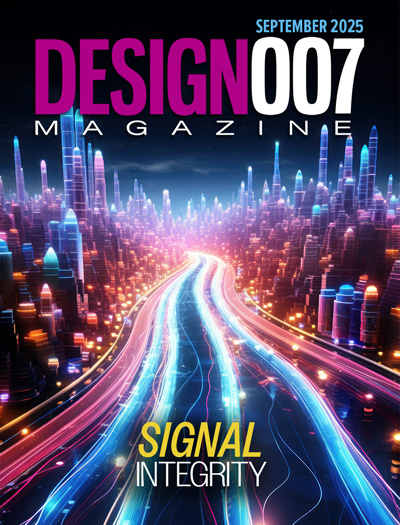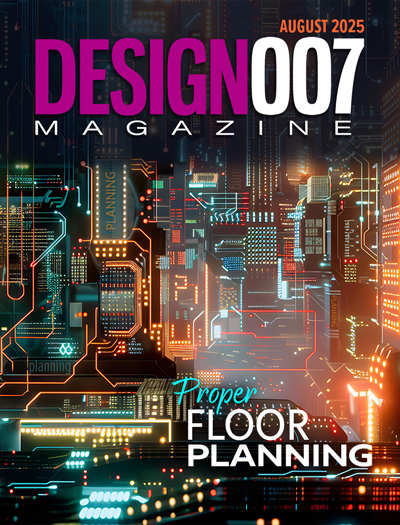-

- News
- Books
Featured Books
- design007 Magazine
Latest Issues
Current Issue
Power Integrity
Current power demands are increasing, especially with AI, 5G, and EV chips. This month, our experts share “watt’s up” with power integrity, from planning and layout through measurement and manufacturing.

Signal Integrity
If you don’t have signal integrity problems now, you will eventually. This month, our expert contributors share a variety of SI techniques that can help designers avoid ground bounce, crosstalk, parasitic issues, and much more.

Proper Floor Planning
Floor planning decisions can make or break performance, manufacturability, and timelines. This month’s contributors weigh in with their best practices for proper floor planning and specific strategies to get it right.
- Articles
- Columns
- Links
- Media kit
||| MENU - design007 Magazine
Estimated reading time: 1 minute
The Shaughnessy Report: The Economics of Design
Most colleges teach an economics curriculum. We’re not exactly professors, but this month, we’re going to whip out our calculators and look into the economics of PCB design.
We first came up with the idea for a design economics issue during our research for the March 2020 issue, which focused on design for profitability (DFP). Everyone can agree that profit is a good thing; however, the main disagreement among PCB designers and design engineers seems to center around the best design practices for more profitable designs.
Along the way, we heard a surprising statistic: Some project managers believe that up to 80% of the cost of the PCB is determined in the design cycle, so I wanted to know a few things. How do designers and design engineers manage and track costs? How do they figure out what to bid on a design job?
In a recent survey, we asked designers if they utilized metrics when tracking the cost of their designs, and 83% said they didn’t. Here are a few of the respondents’ comments regarding design costs, edited lightly for clarity:
• We currently track BOM cost, part size, and pin count. Total part area vs. available board area gives us a “difficulty” metric that we use to create an estimated cost based on pin count and BOM.
• PCB cost is a small part of the overall product cost. We track this at the product level, not the PCB level.
• We think of it more from a design for manufacturability perspective. We assume (maybe incorrectly?) that if it is readily producible at high reliability and good yields, it will maximize our profit.
• I am a circuit board layout specialist. Others take the lead on a project’s cost-related concerns.
• Cost reduction is always on our mind.
To read this entire column, which appeared in the April 2020 issue of Design007 Magazine, click here.
More Columns from The Shaughnessy Report
The Shaughnessy Report: Watt About Power Integrity?The Shaughnessy Report: Winning the Signal Integrity Battle
The Shaughnessy Report: A Plan for Floor Planning
The Shaughnessy Report: Showing Some Constraint
The Shaughnessy Report: Planning Your Best Route
The Shaughnessy Report: Solving the Data Package Puzzle
The Shaughnessy Report: Always With the Negative Waves
The Shaughnessy Report: Breaking Down the Language Barrier


